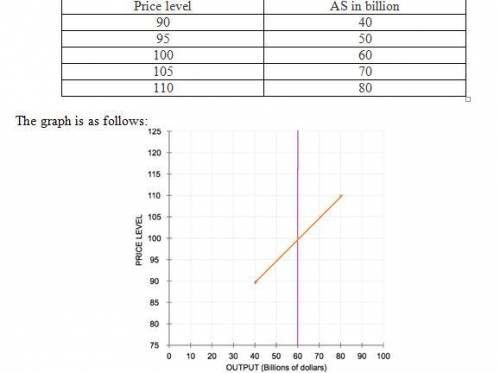
Business, 27.03.2020 22:51 lileljusto2829
In the short run, the quantity of output that firms supply can deviate from the natural rate of output if the actual price level in the economy deviates from the expected price level. Several theories explain how this might happen. For example, the sticky-price theory asserts that the output prices of some goods and services adjust slowly to changes in the price level. Suppose firms announce the prices for their products in advance, based on an expected price level of 100 for the coming year. Many of the firms sell their goods through catalogs and face high costs of reprinting if they change prices. The actual price level turns out to be 90. Faced with high menu costs, the firms that rely on catalog sales choose not to adjust their prices. Sales from catalogs will (Remain the same/fall/rise), and firms that rely on catalogs will respond by (Increasing/Reducing) the quantity of output they supply. If enough firms face high costs of adjusting prices, the unexpected decrease in the price level causes the quantity of output supplied to (Fall below/Rise above) the natural rate of output in the short run. Suppose the economy's short-run aggregate supply (AS) curve is given by the following equation:Quantity of output supplied = Natural Rate of output + a x (Price level (actual) - Price level (expected))The Greek letter a represents a number that determines how much output responds to unexpected changes in the price level. In this case, assume that a= $2 Billion. That is, when the actual price level exceeds the expected price level by 1, the quantity of output supplied will exceed the natural rate of output by $2 billion. Suppose the natural rate of output is $60 billion of real GDP and that people expect a price level of 100.The short-run quantity of output supplied by firms will rise above the natural rate of output when the actual price level (rises above/falls below) the price level that people expected.

Answers: 3


Other questions on the subject: Business

Business, 22.06.2019 15:10, hsbhxsb
Popeye produces 20 cans of spinach in 8 hours. wimpy produces 15 hamburgers in 10 hours. if each hamburger trades for 1.5 cans of spinach, then: a. wimpy’s production and productivity are greater than popeye’s. b. popeye’s production is greater than wimpy’s, but his productivity is less. c. wimpy’s production is greater than popeye’s, but his productivity is less. d. popeye’s production and productivity are greater than wimpy’s.
Answers: 3

Business, 22.06.2019 17:50, Senica
Bandar industries berhad of malaysia manufactures sporting equipment. one of the company’s products, a football helmet for the north american market, requires a special plastic. during the quarter ending june 30, the company manufactured 35,000 helmets, using 22,500 kilograms of plastic. the plastic cost the company $171,000. according to the standard cost card, each helmet should require 0.6 kilograms of plastic, at a cost of $8 per kilogram. 1. what is the standard quantity of kilograms of plastic (sq) that is allowed to make 35,000 helmets? 2. what is the standard materials cost allowed (sq x sp) to make 35,000 helmets? 3. what is the materials spending variance? 4. what is the materials price variance and the materials quantity variance?
Answers: 1

Business, 22.06.2019 19:00, michael1498
It is estimated that over 100,000 students will apply to the top 30 m. b.a. programs in the united states this year. a. using the concept of net present value and opportunity cost, when is it rational for an individual to pursue an m. b.a. degree. b. what would you expect to happen to the number of applicants if the starting salaries of managers with m. b.a. degrees remained constant but salaries of managers without such degrees decreased by 20 percent
Answers: 3
You know the right answer?
In the short run, the quantity of output that firms supply can deviate from the natural rate of outp...
Questions in other subjects:





Mathematics, 17.12.2020 21:10

English, 17.12.2020 21:10


Mathematics, 17.12.2020 21:10


Health, 17.12.2020 21:10




